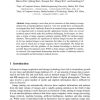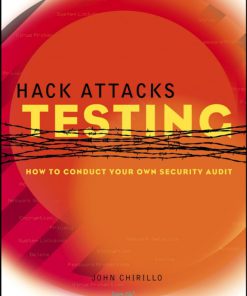Computer Hacking Beginners Guide How to Hack Wireless Network Basic Security and Penetration Testing Kali Linux Your First Hack 1st Edition by Alan T Norman ISBN B01N4FFHMW 9781541335189
Original price was: $50.00.$25.00Current price is: $25.00.
Authors:Alan T. Norman , Series:IT & Computer [324] , Tags:Information Technology; Computer Engineering , Author sort:Norman, Alan T. , Ids:Google; 9781541335189 , Languages:Languages:eng , Published:Published:Dec 2016 , Publisher:CreateSpace Independent Publishing Platform , Comments:Comments:Get this Amazing Book – Great Deal!This book will teach you how you can protect yourself from most common hacking attacks — by knowing how hacking actually works! After all, in order to prevent your system from being compromised, you need to stay a step ahead of any criminal hacker. You can do that by learning how to hack and how to do a counter-hack.Within this book are techniques and tools that are used by both criminal and ethical hackers – all the things that you will find here will show you how information security can be compromised and how you can identify an attack in a system that you are trying to protect. At the same time, you will also learn how you can minimize any damage in your system or stop an ongoing attack.With Hacking: Computer Hacking Beginners Guide…, you’ll learn everything you need to know to enter the secretive world of computer hacking. It provides a complete overview of hacking, cracking, and their effect on the world. You’ll learn about the prerequisites for hacking, the various types of hackers, and the many kinds of hacking attacks: Active Attacks Masquerade Attacks Replay Attacks Modification of Messages Spoofing Techniques WiFi Hacking Hacking Tools Your First Hack Passive AttacksGet Your Hacking: Computer Hacking Beginners Guide How to Hack Wireless Network, Basic Security, and Penetration Testing, Kali Linux, Your First Hack right away – This Amazing New Edition puts a wealth of knowledge at your disposal. You’ll learn how to hack an email password, spoofing techniques, WiFi hacking, and tips for ethical hacking. You’ll even learn how to make your first hack.Scroll Up And Start Enjoying This Amazing Deal Instantly













